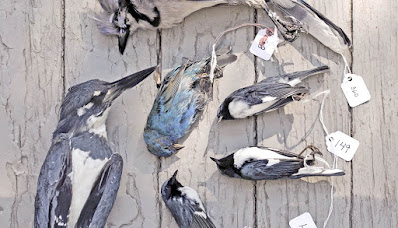A brand-new study recommends that while smaller sized structures cause less bird fatalities compared to bigger ones, bigger structures in backwoods are deadlier for birds compared to if structures of the same dimension were located in metropolitan locations.
SUCH COLLISIONS ARE THE LARGEST UNINTENDED HUMAN CAUSE OF BIRD DEATHS WORLDWIDE…
jenis permainan di situs togel online
About one billion birds pass away every year when they unknowingly fly right into human-made objects such as structures with reflective home windows. Such accidents are the biggest unintentional human reason for bird fatalities worldwide—and they are a major concern for conservationists.
The research group kept track of 300 structures of differing dimension and ecological environments for bird death at 40 university and college campuses in North America in the fall of 2014. This consisted of 6 structures on the College of Washington's Seattle campus. They designed a standard monitoring procedure so that the area teams recorded bird death consistently.
In all, they recorded 324 bird carcasses of 41 species. At each website, someplace in between no and 34 birds satisfied their downy death.
"Consistent with previous studies, we found that building dimension had a solid favorable effect on bird-window collision death," the scientists write in a declaration about the continent-wide research. "But the stamina of the effect on death depended upon local urbanization."
Why is that? The scientists think it may be related to how birds select habitats throughout movement, and distinctions in bird habits in between metropolitan and country populaces. For instance, they write, forest-adapted birds often select country habitats with great deals of open up space and relatively couple of impervious surface areas over more metropolitan locations.
Illumination patterns may also figure in, they factor. Lights from large, low-rise structures in backwoods may act to draw in moving birds in what the group dubbed a "large-scale sign effect," where this effect may be "more watered down amongst large structures in metropolitan locations."
Another concept is that metropolitan birds may actually gain from "non-fatal" accidents and gain "new anti-collision habits" that help them avoid clashing with home windows in metropolitan locations. Previous research, they keep in mind, "recommends that the fairly large mind dimension in birds makes them keyed for learning."
The outcomes recommend, the writers write, that measures required to prevent bird accidents "should be focused on at large structures in areas of reduced urbanization throughout North America."
The study shows up in the journal Organic Preservation. The coauthors of the study are from the College of Washington and Augustana University. The study was organized through the Environmental Research as Education and learning Network (EREN).




